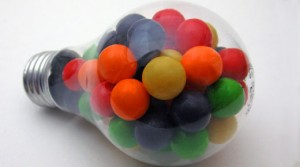Skoltech Innovation Program 2014 – Winners Announced
Skoltech has selected six research teams for the Skoltech Innovation Program 2014. The winning projects were selected from among more than 30 submissions based on technical feasibility, potential for commercialization, and the actual need for support from Skoltech. These brainchildren of students from all over Russia could have a real impact on society and industry. They give us good reasons to believe that Russian innovation is up to the mission of solving real problems in the world. That is why the winners will be invited to conclude legal agreements with Skoltech to receive support for their projects for one year.
The international review panel was impressed with the high quality of all the proposals. The decision-making process was difficult, with many worthy candidate projects vying for a limited number of spots.
The successful applicants are:
- A Platform approach to develop new antibiotic leads based on microcins (Skoltech, St. Petersburg State Polytechnical University)
- Nanopipette electrochemical biosensors (Moscow State University, Department of Chemistry)
- Superhydrophobisation of synthetic fabrics by deposition of ultrathin fluoropolymer films from solutions in supercritical carbon dioxide (Moscow State University, Department of Physics)
- Perspective graphene-based materials with high absorption index in visible and near IR range (Moscow State University, Department of Physics)
- Multisensor Device for Instrumental Toxicity Assessment (National Research University of Information Technologies, Mechanics and Optics, St. Petersburg Technical University)
- Superplastic aluminum sheets (National University of Science and Technology “MISIS”)

photo courtesy www.jisc.ac.uk/
More detailed information about the projects:
1. A platform approach to the development of new antibiotic leads based on microcins
Research Area: Gene- and nano-medicine, Translational medicine
Project Summary:The rapid global spread of bacterial resistance to existing antibiotics and the dearth of development of new antibiotics leads to a significant societal problem that will become even more serious if no action is taken in the near future (it also happens to be the subject of our May 12 seminar with Nobel laureate professor Sidney Altman). This proposal aims to try to help solve this problem by developing and evaluating antibacterial agents based on microcins – ribosomally-encoded antibacterial peptides. Unlike most antibiotics, which are synthesized by complex enzymes, microcin peptide precursors are encoded by genes. Therefore, the power of molecular genetics can be brought to create large libraries of microcin derivatives among which molecules with desired properties can be sought for further development.
- Nanopipette electrochemical biosensors
Research Area:Gene- and nano-medicine
Project Summary:Project is focused on development of modification methods for electrodes integrated in nanopipette. The research team has already obtained preliminary results on application of modified nanopipette for intracellular biosensing. Tools based on double barrel nanopipettes with integrated sensitive electrodes have a great potential to be implemented in pharmaceutical companies for drug discovering. Equipment based on “Smart” nanopipette technology will enable 35000 times faster screening and a 5000 times reduction in the number of cells required.
3. Superhydrophobisation of synthetic fabrics by deposition of ultrathin fluoropolymer films from solutions in supercritical carbon dioxide
Research Area: Advanced materials
Project Summary:We propose a new promising technique of imparting superhydrophobic properties to synthetic fabrics by depositing ultrathin fluoropolymer films from the solutions in supercritical carbon dioxide (SC CO2). This technology has a wide range of applications. It will allow to create self-cleaning breathable waterproof fabrics for production of clothes and outdoor equipment. While participating in the Program the team plans to develop prototypes of fabrics with stable superhydrophobic properties.
4. Perspective graphene-based materials with high absorption index in visible and near IR range
Research Area: Quantum physics/technology; Advanced materials
Project Summary:The project implies the development of the fabrication technology and studies of optical characteristics of Carbon Nanowalls (CNWs) in a wide wavelength range from 300 nm up to 200 μm. The main idea is to optimize the CNWs fabrication technology in order to compose highly absorptive and nonreflective nanocoatings.
5. Multisensor Device for Instrumental Toxicity Assessment
Research Area: Machine learning and artificial intelligence; Advanced materials
Project Summary:This project aims to develop and advance the multisensor device and software for instrumental toxicity assessment in environmental monitoring. Recently we accomplished the proof of concept for a new approach to toxicity evaluation. This new concept is based on instrumental measurements in samples with a specially developed electrochemical multisensor system and multivariate processing of the obtained data. This combination of sensor array and chemometric techniques allows for toxicity determination in terms of bioassay without immediate involvement of living creatures (besides on a calibration stage); measurements are fast and simple; the results are in toxicity units of corresponding biotest method. Such kinds of experiments are unique and were never reported in scientific periodicals before and we see a very attractive business opportunity in their advancement towards the environmental monitoring market.
6. Superplastic aluminum sheets
Research Area: Advanced materials; Composite materials, structure, and construction
Project Summary:Superplasticity is the specific state in which solid crystalline material can be deformed well beyond its usual breaking point: usually more than 200 % during tensile deformation. This project is direct to the optimization of the alloys composition and laboratory technology of superplastic aluminum sheets producing. The main purposes of the project include developing of the new materials, and producing the thickened sheets for commercial introduction. The new materials offers opportunities to reduce part count by forming components in a single piece, increase structural integrity of the part and assembly, reduce part weight, and speed up final assembly.
* The Skolkovo Institute of Science and Technology (Skoltech) is a private graduate research university in Skolkovo, Russia, a suburb of Moscow. Established in 2011 in collaboration with MIT, Skoltech educates global leaders in innovation, advance scientific knowledge, and foster new technologies to address critical issues facing Russia and the world. Applying international research and educational models, the university integrates the best Russian scientific traditions with twenty-first century entrepreneurship and innovation.
